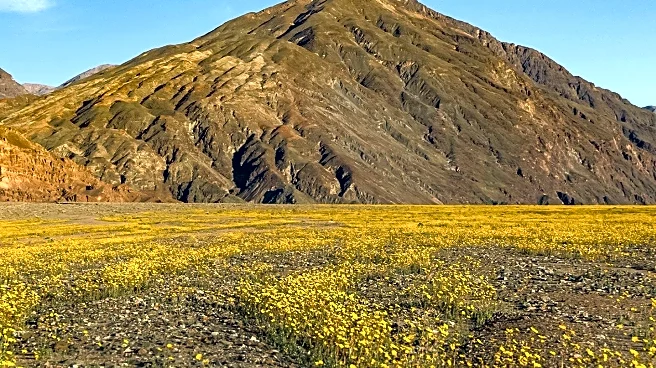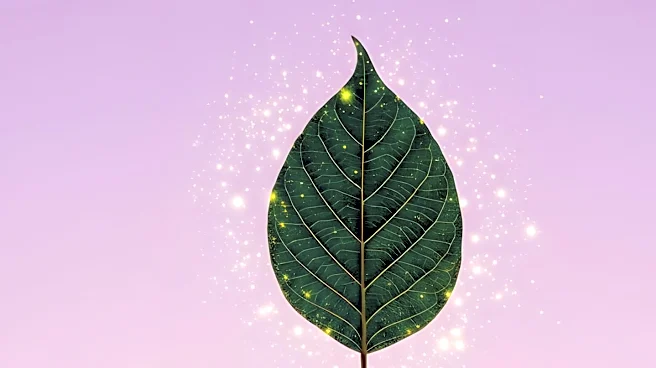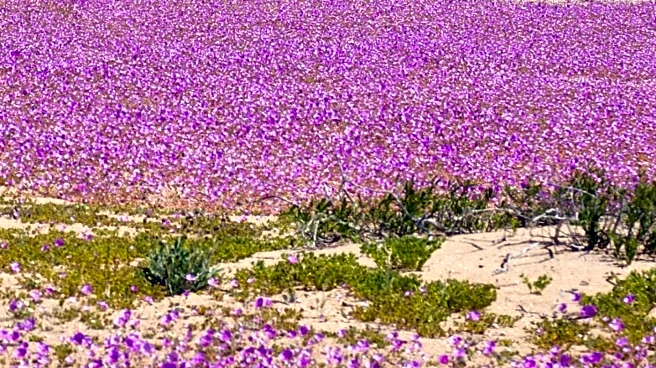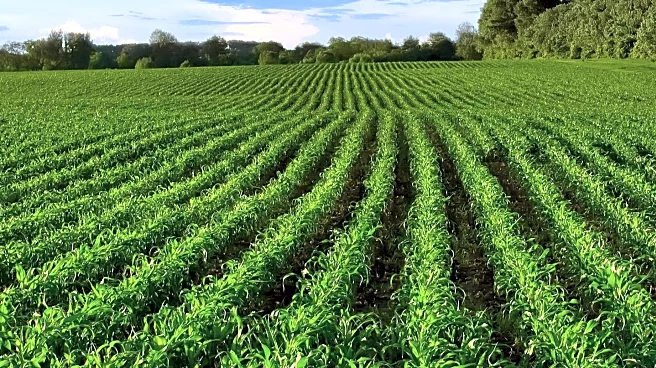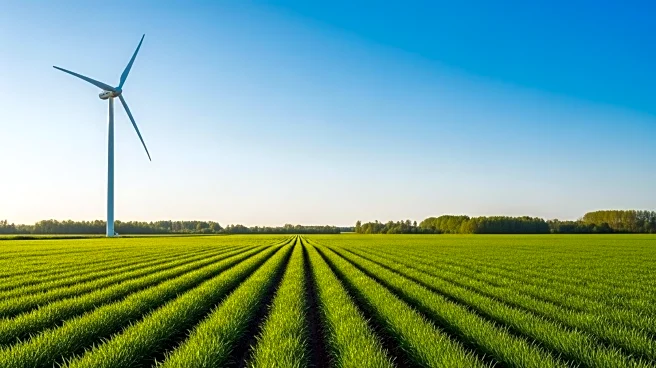What's Happening?
The Atacama Desert in Chile, known for its extreme aridity and clear night skies, has undergone a rare transformation. Significant rainfall during the southern hemisphere's winter months has led to a vibrant bloom of wildflowers across the desert landscape. This phenomenon occurs only every few years when above-average rainfall activates dormant seeds. The desert, which typically receives less than 15mm of rain annually, experienced over 12mm in August alone, with most of the precipitation occurring in a single day. The bloom consists of more than 200 species of wildflowers, some unique to the region, and is expected to last until November. This event follows a similar occurrence in 2024, also triggered by heavy rainfall.
Why It's Important?
The wildflower bloom in the Atacama Desert is significant for several reasons. It highlights the impact of unusual weather patterns on ecosystems, showcasing how rare rainfall can dramatically alter landscapes. This event attracts tourists and botanists, boosting local tourism and providing opportunities for scientific study. The bloom also underscores the importance of understanding climate variability and its effects on biodiversity. For Chile, this natural spectacle enhances the country's environmental appeal and may influence conservation efforts in the region. The bloom serves as a reminder of the delicate balance within desert ecosystems and the potential consequences of climate change.
What's Next?
As the bloom continues, Chile's National Forest Corporation (CONAF) is monitoring the event to ensure the protection of the unique flora. The peak of the bloom is expected to last for a few more weeks, drawing increased attention from tourists and researchers. Local authorities may implement measures to manage visitor impact on the fragile ecosystem. Additionally, the event may prompt further studies into the effects of climate change on desert environments, potentially influencing future conservation strategies. The Atacama Desert's transformation could lead to increased awareness and appreciation of the region's ecological significance.
Beyond the Headlines
The Atacama Desert's wildflower bloom offers deeper insights into the resilience and adaptability of desert ecosystems. It raises questions about the long-term impacts of climate change on arid regions and the potential for similar phenomena in other deserts worldwide. The bloom also highlights the cultural and scientific value of preserving unique natural events, encouraging a broader discussion on environmental stewardship. As climate patterns continue to shift, understanding these rare occurrences becomes crucial for predicting and mitigating ecological changes.
